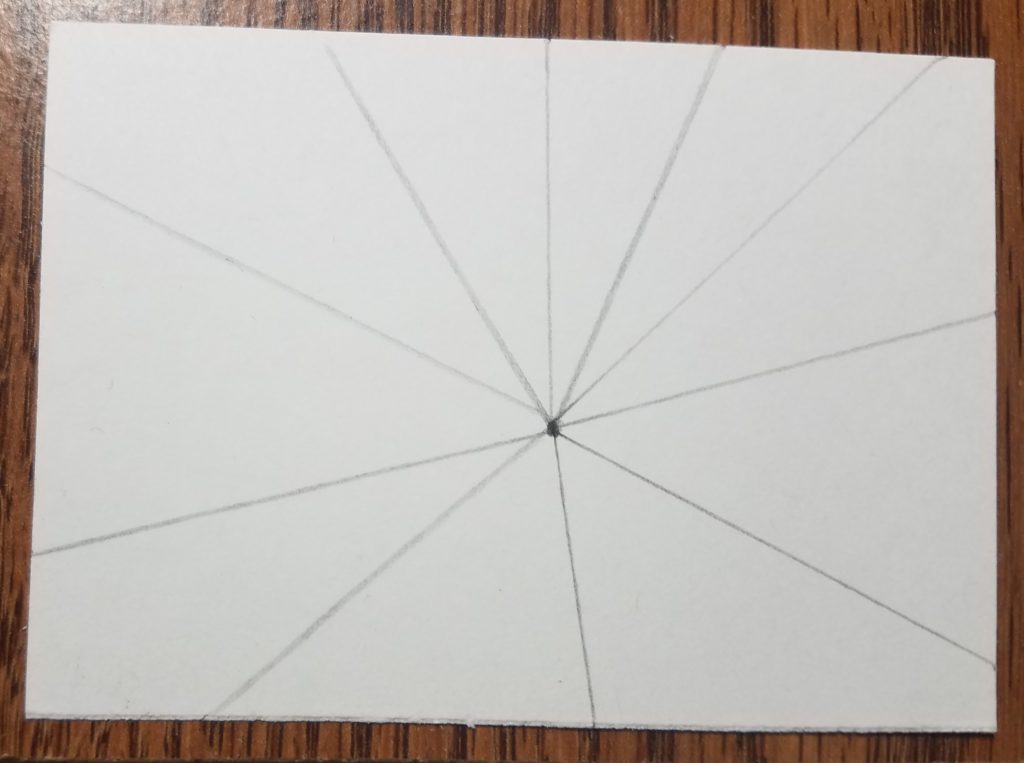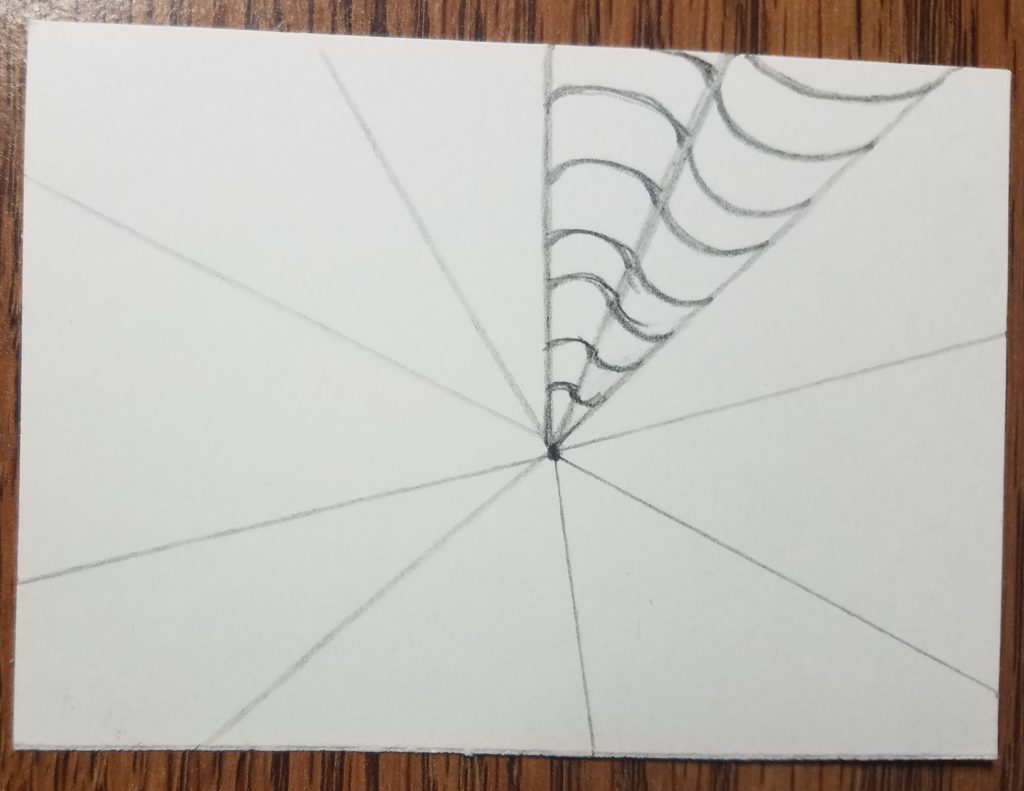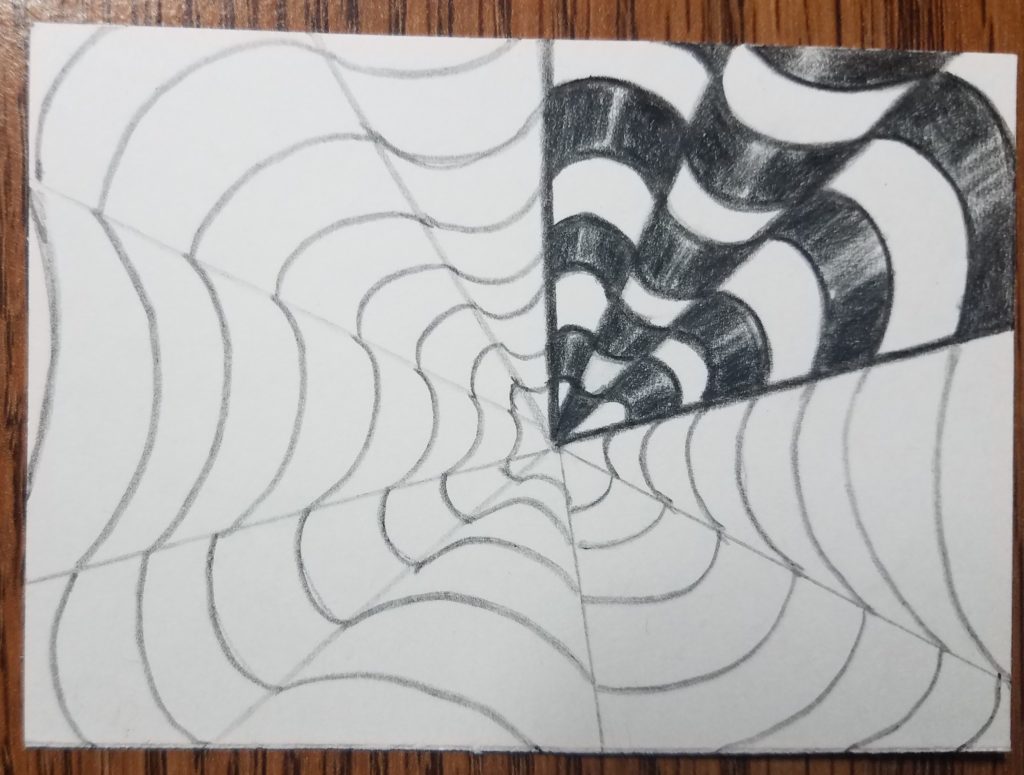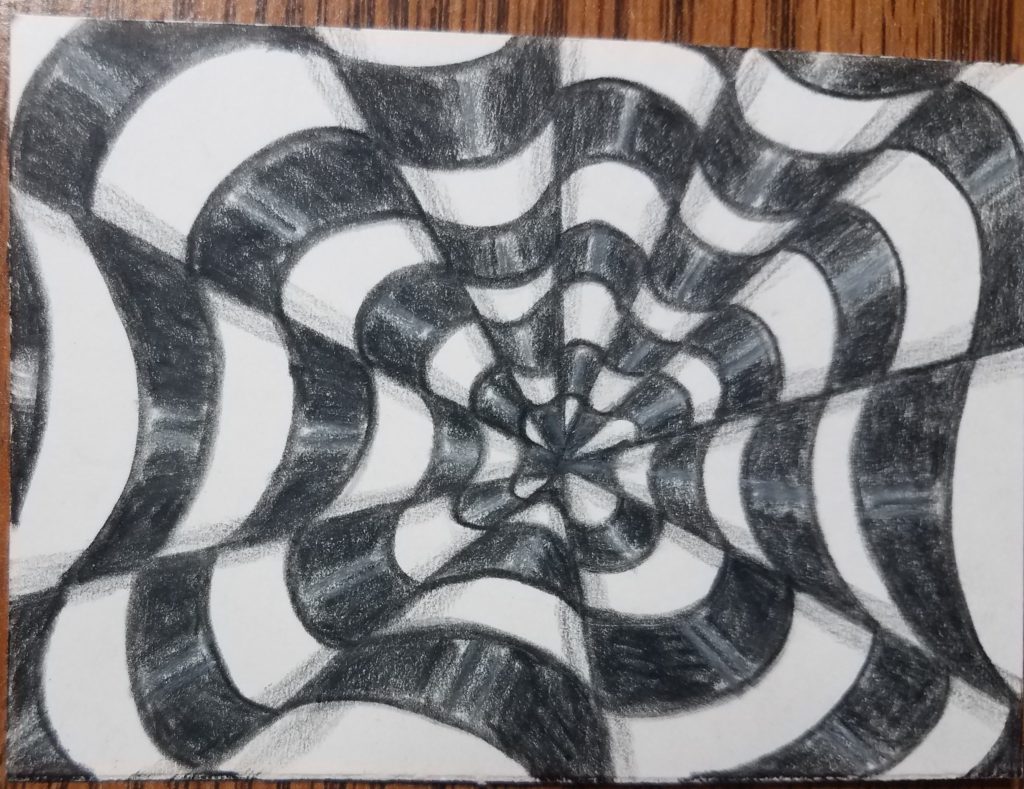Easy Op Art Drawing
Today you’ll learn how to draw an op art bullseye in this easy to follow step by step optical art tutorial. I’ve been drawing these for several years, and they are still a lot of fun. They can be used as a finished work of art all on it’s own. Or they can be used in the background to add an interesting accent.
This tutorial is great for beginners of all ages and the variations are endless. From the medium you use, to the colors schemes you apply to your finished drawing.
What is Op Art
Op art, short for optical art, is a form of abstract art that fools your eye. One of two things usually happens when viewing optical art. Either the lines and shapes appear to move, or you see something different depending on where you focus your eyes. Bridget Riley and Victor Vasarely are credited as being the founders of the optical art movement which emerged in the 1960’s. Learn more at The History of Op Art.
* Some of the links in this post may be affiliate links. This means I receive small commissions for purchases made through these links at no extra cost to you.
Art Supplies
- Pencil
- Ruler
- Paper
- Colored Pencils (or other medium for adding color)
Step by Step How to Draw an Op Art Bullseye
Vanishing Point
The first thing you need to do is decide where you want your vanishing point to be. The vanishing point is the spot where your lines come together. You can draw it right in the center of your paper or you can place it somewhere off-center. The choice is totally up to you. Where you place your vanishing point will change the look of your final drawing.

Draw Your Lines
After you’ve decided where to place your vanishing point, draw radiating lines coming out from that point. I find it easier if you use a ruler to do this. Make sure you draw an even number of lines. If you draw an odd number of lines, your pattern will not work out. I used a regular pencil to draw everything out first. The space between each line does not have to be the same. However, you want to avoid having too large of gaps as it will making lining up your curved lines in the next steps more difficult.
You could also draw these lines freehand. Using a ruler or drawing them freehand will give you slightly different looks.

Add Curved Lines
Draw curved lines in each of the sections. When drawing your lines, alternate between curving your lines down and curving them up (from section to section). I started my first section with lines that the arch curves up. Try to keep your curved lines as close to the same as possible. They should be parallel with each other. In the image below, the first section is completed.

The adjacent sections on the left and the right will need to curve the opposite direction, so I curved them down. When drawing your lines, you want them to line up with the lines on either side. If your lines do not line up with one another, your final drawing will not look right.

Work your way around each section, alternating the direction your lines curve until all your sections have been filled in. If you drew an odd number of radiating lines, you’ll end up with two adjacent sections having the same direction of curved lines. If this happens, you would need to start over as it would ruin the optical illusion.

Outline and Coloring Your Op Art Bullseye
Now it’s time to outline your drawing and add color to your sections. You can choose one color and leave the sections in between white. Or you can use two or more colors. Just be sure to alternate colors and stick to a pattern. I decided to use only black for my drawing. I used a black Prismacolor pencil. You could also use a thin black marker to outline your drawing.
To learn more about Prismacolor pencils, visit Prismacolor Colored Pencil Review – 48 Pack.

When adding color, leave a little bit of a highlight right down the center of each section to make your drawing look more three-dimensional. You could also go in with a kneaded eraser after coloring and lift some of the color back off. I find it easier to just leave a little bit of white showing.
If you choose to use more than one color, I would encourage you to use a color scheme. If you use random colors, your final work of art will not have unity. Following a color scheme will make your finished work much more interesting to look at.
To learn more about color theory, check out The 7 Elements of Art.
Alternate Colored Areas
Continue working your way around your drawing, adding color to alternating sections. In my example, if an area is black, the one directly next to it will need to be white. The pattern should alternate black and white from the vanishing point to the outside edge of your paper. You should also have an alternating black and white pattern going around your drawing.

Completed Pattern
This is what your drawing should look like with everything filled in. As you can see, I left a white highlight right down the center of each section of black. Leaving the highlights gives the effect of the sections being rounded and makes it look like they are popping off the paper.

Op Art Drawing – Bullseye
The last thing I did was to go in and add some shadows along the edges to make the drawing look even more three-dimensional. You can shade in your edges or leave them the way they are. This is a personal preference.

I hope you enjoyed this lesson on how to draw an op art bullseye. Don’t be afraid to experiment with different color schemes and different media.
Easy Op Art Drawings
The example below was created in a slightly different manner. For this one I drew my radiating lines without using a ruler, so they are not quite as straight as the ones in the previous example. I also used a black marker for my outlines and to fill in the black areas. For the color, I used a cool color scheme.

I did my drawing on an Artist Trading Card (ATC). Once traded, this card will be sent off to a new home. If you are not familiar with ATCs, I encourage you to check out my tutorial on How to Make Artist Trading Cards. ATCs are a great way to practice drawing and creating works of art.
How about a patriotic twist? Learn how in this 4th of July optical art tutorial.

How to Draw an Op Art Bullseye
If you like optical art drawings, check out these other tutorials we have for creating your own optical illusions.


I love your work….
Thank you. I’m glad you like it.
Oh my, this was relatively easy, but looks super cool!! Thank you so much for all you do!!
You’re welcome! I’m so glad you like the tutorial.
I was looking for something like that……
Enjoyed your tutorial 😍
Awesome! Glad you liked it.
can you do a video hoe to make it please
I’m working on adding videos to the lessons… stay tuned!
enjoyed making them
Great! I’m glad you enjoyed them.
thank you for the tutorial I really appreciate it😁
You’re welcome. I’m glad you enjoyed it!
Will this look good if I use plaster?
I’m not exactly sure how you would make this with plaster. Are you talking about carving it into plaster? That would look really cool! And plaster carving is extremely fun and rewarding to do.
This is beautiful!! I enjoyed your tutorial! 😃
Thank you. I’m so glad you enjoyed it.